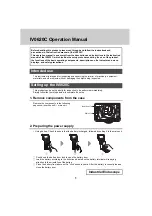
Code
Explanation
D
Departure.
LA
Left arrival, the leftmost of 2 or 3 parallel runways for arrival. For example,
17LA
refers to
the leftmost runway facing 170 degrees, designated for arriving aircraft.
RA
Right arrival, the rightmost of 2 or 3 parallel runways for arrival. For example,
26RA
refers to
the rightmost runway facing 260 degrees, designated for arriving aircraft.
MBA
Microburst alert.
WSA
Windshear alert.
MD
Nautical miles from departure, the estimated location of the first encounter with the
windshear or microburst condition. For example,
MBA 1 MD
indicates that there is a
microburst alert 1 nautical mile from the departure runway.
MF
Nautical miles from final approach, the estimated location of the first encounter with the
windshear or microburst condition. For example,
WSA 3MF
indicates that there is a
windshear alert 3 nautical miles from the final approach runway.
RWY
Runway, the estimated location of the first encounter of the windshear or microburst
condition. For example,
WSA RWY
indicates that there is a windshear alert on the runway.
*
Possible windshear conditions outside the sensor network.
MMM
Missing wind direction data.
MM
Missing wind speed data.
4.2.2 Centerfield Wind Data and Time
The centerfield wind data and time are displayed on the weather data screens. The location
of this data on the screen depends on the configuration of the system. The sensor that sends
the centerfield data is defined during configuration. The time is set to the UTC time
(Universal Time Coordinated) from the computer clock.
4.2.3 LLWAS Processing Status
LLWAS processing status is displayed on the weather data screens. The location of the
status data depends on the configuration of the system. The LLWAS processing status
indicates the status of the sensor network. The statuses are explained in the following table.
Table 7 LLWAS Processing Statuses
Status
Explanation
NORMAL
All sensors are operating and reporting normally.
DEGRADED
Some of the sensors are inactive, but the number of inactive sensors does not exceed
the preconfigured limit for inaccurate data. The reported data is still fairly reliable and
windshear and microburst alerts can be provided.
SUPPORT
The number of inactive sensors exceeds the preconfigured limit for inaccurate data.
Windshear and microburst alerts cannot be provided.
The system may also have just been restarted and there is not enough data available
yet.
Low-Level Windshear Alert System User Guide
M210885EN-K
20
Содержание CT25K
Страница 1: ...M210885EN K User Guide Vaisala AviMet â Low Level Windshear Alert System ...
Страница 5: ...Glossary 73 Index 77 Technical Support 81 Warranty 81 Recycling 81 Table of Contents 3 ...
Страница 8: ...Low Level Windshear Alert System User Guide M210885EN K 6 ...
Страница 44: ...Low Level Windshear Alert System User Guide M210885EN K 42 ...
Страница 68: ...Low Level Windshear Alert System User Guide M210885EN K 66 ...
Страница 82: ...Low Level Windshear Alert System User Guide M210885EN K 80 ...
Страница 84: ...Low Level Windshear Alert System User Guide M210885EN K 82 ...
Страница 85: ......
Страница 86: ...www vaisala com ...















































